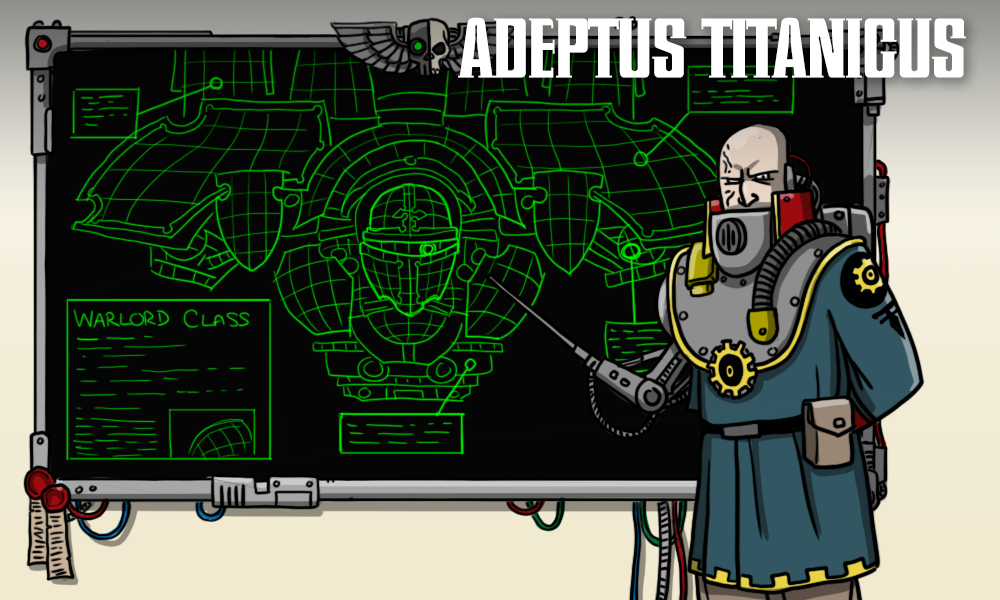Welcome back to Goonhammer’s series for aspiring Titan Principes. We here at Goonhammer’s own Collegia Titanica know that Adeptus Titanicus can seem intimidating to players unfamiliar with its particular quirks, but this series aims to equip you with everything you’ll need to play out epic clashes on the battlefields of the far future with your very own Titan Battlegroup. In this series, we’ll be walking you through how to build your battlegroup and command it to glory, including everything from which Titans to include and how to equip them, through to how to command them on the field of battle to secure ultimate victory.
Note that this article was originally published in 2019. It has been updated to reflect new rules and changes.

This week, we’re taking a look at the loyalist Titan Legions available to choose from in the various rules sources. These rules will form one half of the core identity of your battlegroup, giving you access to passive legion traits, additional stratagems and wargear you can purchase, and a set of Princeps traits to choose from in lieu of the ones on offer in the core rules. There’s an incredible amount of variety to choose from here, with plenty of room for you to take a particular legion and make it your own. Some of these are all-in on one particular aspect of the game, while others provide benefits that are more spread out.
After you choose your legion, you’ll need to choose a maniple as well. Some legions lend themselves to particular maniple traits or Titan selections, and you’ll want to do what you can to take advantage of those synergies. Make no mistake: planning to win a game of AT starts here, at the beginning of list construction. Start thinking of how you want to approach the game as you choose your Legion, and let that plan guide the decisions you make once you’ve declared your allegiance.
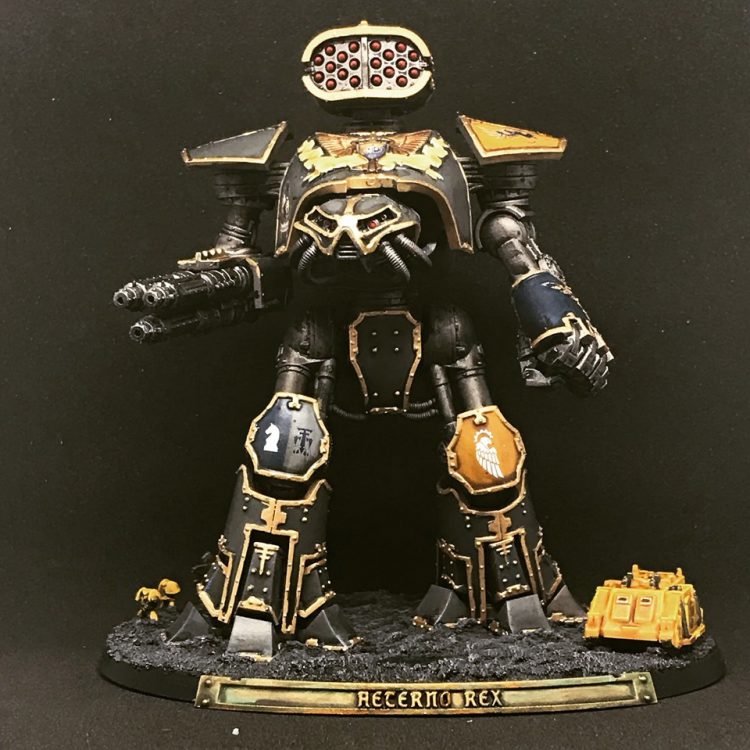
Legio Ignatum – “Fire Wasps”
Legio Ignatum first showed up in Crucible of Retribution, and bring some surprising close-range punch to the Loyalist roster. Bringing a solid combo of reliable firepower and tools to punish enemies who stray too close, they’re a solid choice across the board.
The Fire Wasps play a closer-ranged game than you might expect, as their We Loyal Few trait lets them re-roll 1s to hit against targets within 12″. And before you start panicking about potential melee threats, their Punish Their Folly stratagem lets them effectively fire overwatch against chargers, and they get to use their Ballistic Skill to boot, regardless of whether the charging target is within 2″. Add in the Gravitonic Sensor Array wargear, which improves their accuracy against targets who are obscured, and you’ve got a useful set of options that any Princeps can get mileage out of.
Ignatum provide a potent close-range threat, and get a ton of mileage out of weapons with accuracy boosts in close where their re-rolls to hit can combine with 2+ to hit to get some of the most reliable weapons in the game. And with their wargear on top of that, hiding won’t do your enemies much good – they’ll need to get to 50% cover before you even take a -1 to hit, and won’t be able to impose the -2. Don’t count out melee titans, though: while an Ignatum chainfist Reaver may not be as scary as some of the threats the Traitor legios can put on the table, they’re still pretty scary.
Legio Gryphonicus – “War Griffons”
One of the two Titan Legions on offer in the Core Rules, the War Griffons bring a potent kit that makes their Reavers into absolute terrors, and really shines in close combat. If your idea of a good time is a bunch of God-Engines engaged in a series of honor duels, look no further.
The two Legio Traits on off here are what really sets the legion apart. First, you can swap in Reavers in place of any Warhound or Warlord in a maniple. This lets you do some really interesting things, like a Ferrox full of Reavers, or an Extergimus full of Reavers, or a Venator with more than one Reaver, or…you get the idea. Once you’ve shoved a bunch of Reavers in your list, have each one pick their honor duel target, against whom they’ll re-roll 1s to hit and add 1 to armor rolls made against that target. Just be careful, though: if another Legio Gryphonicus Titan attacks your claimed target, the claim is forfeit and the rule stops working.
This creates an interesting dynamic: it can honestly be hard to “1v1″ a Titan without a little help. You’ll find that the easiest way to do that is in melee, but closing to within 2” of your target can be difficult without access to the Traitor Legios’ powerful suite of combat-focused stratagems and other tricks. Thankfully, Gryphonicus has got just the thing in their Motive Sub-Reactors wargear, which lets their Reavers push for speed and maneuvers without rolling the reactor die. Add in a melee or brawler loadout on each Titan and you’re cooking with gas.
What you’re left with is a remarkably aggressive loyalist legion with an interesting twist: rather than choosing a single target and focusing it down before moving on to the next one, you call your targets at the start of the game, then try to force situations where your opponent has to fight you on your terms. It takes some practice and finesse to make it really sing, but if you want a somewhat different melee-focused experience, this is a great choice.
Legio Astorum – “Warp Runners”
Legio Astorum gets off to a faster start than almost any other legion, takes control of the board, and fights like hell to keep it. Their traits let them set up a fantastically aggressive play for position in the early rounds, after which they can transition smoothly into holding what they’ve taken using their unique stratagems and ability to re-roll repair dice. Unfortunately, they get no unique wargear and their Princeps traits are somewhat uninspiring, but all in all they’re a perfectly reasonable choice.
The first two rounds for the Warp Runners are all about positioning – their Titans can choose to add 2″ to their boosted movement in those rounds, letting their Warlords and Reavers cover a ton of ground and allowing them to set up exactly where they want to be. There’s a catch, though: any time they’d roll the reactor die, they have to roll twice and take the worst result. They can manage that heat remarkably well, though, thanks to their Veteran Princeps trait, which allows them to re-roll a die in the Damage Control phase – or two, if the Titan is scale 10 or higher.
These two traits combine to allow the Warp Runners to aggressively take control of the mid-board in the early game and bring brawler Warlords and mid-ranged Reavers to bear sooner than your opponent might be expecting. Add in their Machine Defiance stratagem, which lets them make a special repair roll that can only repair voids just before a Titan’s voids collapse, and they’ve got remarkable staying power as well.
Legio Defensor – “Nova Guard”
Sometimes, shooting first is not enough. Sometimes you need to shoot first, then shoot again, and then one more time just for good measure. If this sounds appealing, Legio Defensor just might be for you. On top of being able to put out the most powerful first turn alpha-strike of any legion, the first Nova Guard TItan that would be silenced each game can just refuse to go down, as long as you spent the CP. They’re somewhat front-loaded into their opening salvo, but that salvo can be a doozy.
Between the Righteous Fire trait and the A Day of Retribution stratagem, Defensor Titans get to fire multiple times in the first round, even if they don’t go on First Fire. There’s a cost here – the legion trait costs 2 heat and the stratagem another 3 – but if you’ve taken larger Titans and spent the points for the loyalists’ Plasmatic Binders wargear, you can usually mitigate that. If you’re smart about your deployment and not horrendously unlucky with your dice, you’ve got the best chance of scoring an engine kill in the first round of any legion in the game.
Of course, not all of your tricks are stuck in round 1. Devotional War Sirens is one of the better pieces of wargear in the game, giving a Warlord of your choice an 8″ aura that lets friendly Titans roll 2 dice for Command checks and keep the highest. And at 2SP, Blessings of the Emperor is a steal, allowing you to just flat ignore the first time one of your Titans takes Catastrophic Damage.
Legio Solaria – “Imperial Hunters”
Like Warhounds? Not as much as these ladies. Legio Solaria can bring Warhounds instead of a mandatory Reaver in any maniple, and have plenty of tricks to get the most out of those agile Titans.
Their Fog of War stratagem, which costs 1SP and can be purchased multiple times, allows you to redeploy one of your Warhounds during the Strategy phase of the first round. Since you’re probably heavy on these smaller engines, you can drop one or two of them as your first drops, then redeploy them to respond to your opponent’s deployment. And even if you don’t, a canny opponent will have to consider that you could when placing their own Titans, which might open up some options for you.
Warhounds live and die on their speed, and the Fortis Motivators wargear will help keep your Titans moving. Shove this on a Warhound, and it can use any repair dice to repair Critical Damage to its legs, not just a 5+. That being said, it’s usually better not to be hit at all, so you’ll want some Cameleoline Shrouding. This Wargear imposes a -1 to hit your Warhound so long as it’s 10″ from its attacker and moved at least 6″ this round. You’ll lose the bonus the first time you take any damage, but they’ll have to punch through voids to get there, so you’ll likely get at least a round or two of benefit from it.
Legio Atarus – “Firebrands”
Legio Atarus combine impressive anti-void firepower with some powerful tricks that let you keep your opponent guessing. Their Titans can be incredibly flexible in key moments, and their legion trait lets them take the initiative when it counts.
The Firebrands are one of the most flexible forces in the game thanks to their impressive suite of traits and stratagems. Seizing the Initiative works like a slightly less effective Dominant Strategist, but doesn’t cost you a personal trait. While it only takes effect in the Strategy phase and gives you a re-roll rather than just handing you the Opus, it’s still very good and doesn’t carry any cost. Add in the Maniple of One stratagem, which lets you change a Titan’s maniple trait for a turn, and the Unconventional Thinker personal trait, which is a more potent version of Swift Killer, and your ability to react to your opponent’s gameplan will drive them up the wall.
Of course, you won’t want to forget about Infernus Missiles, which gives apocalypse missiles the Voidbreaker (2) trait, and drops a template that deals a strength 4 hit to the legs of anything standing in it at the end of the round. The latter effect isn’t usually that great (though it can come in handy against a damaged engine), but forcing an extra couple of saves can be downright mean, especially when spread across a couple of Reavers.
Legio Metalica – “Iron Skulls”
It’s Big Boy Summer on forge world Metalica, and all your opponents are invited. Combining a solid double-activation gimmick and some abilities to smooth out the variance in both your own and your opponents’ activations, the Iron Skulls are here, and good luck dislodging them.
The focus of Legio Metalica’s gameplan is their Victories Beyond Measure Legio Trait. Once per round, after you activate one of your Titans, you can immediately activate another Titan, then increase its reactor by 2. You can’t do this if either of the Titans was in a squadron, but that’s fine: the real power of this effect is being able to double-activate your larger engines which are packing serious firepower. Using a high-shot count Brawler Warlord to drop voids, then following up with a series of high-strength Blast weapons before your opponent can react can result in a huge swing in the flow of the game, potentially removing pieces from the board before they can even think about activating them.
Of course, taking larger engines is risky, as the random chance from dice can just as often hurt you as help you. Thankfully, you’ve got a few ways to mitigate that, between Harmony and Order, which lets you ignore an awakened machine spirit once per game, and Bastion Armour, which removes the benefits your opponent gets from their weapons’ Fusion and Rending traits. Taken together, you’ve got a powerful set of rules that rewards you for taking larger engines and burning down specific enemies with extreme prejudice.
Legio Astraman – “Morning Stars”
The Morning Stars are one of the more unusual legions in the game, combining remarkable tenacity with a potent wargear upgrade. They’re definitely not the easiest legion in the game to get mileage out of, but if a Legio Astraman Titan wants to stay on the board, good luck to anyone trying to get rid of the thing.
Astraman’s Unyielding trait lets their Titans take 2 heat and give up their Movement phase to make a repair roll. It then loses the ability to activate in the Combat phase. This is a huge price to pay for a repair roll, but if what you need is a large Titan standing in a particular spot, this is a solid way to make that happen. Combine this with the Strength and Resolve stratagem, which allows one of your Titans to ignore the bonus to armor rolls against it from damage it’s already taken to its structure tracks, and you can make it extraordinarily difficult for your opponent to take a Titan off the board when it counts.
In addition, Morning Stars Titans can take the Maglock Shells upgrade on any weapon with the Ordnance trait. This adds 1 to the result of all armor rolls with that weapon, making gatling blasters that much better and turning the Warlord’s macro-gatling into an outright terror. Combining these weapons with the legion’s incredible toughness is a potent combination that your opponent won’t enjoy having to chew through.
Legio Praesagius – “True Messengers”
None of the Titan Legions come close to Praesagius’s Pinpoint Accuracy, which allows them to re-roll the location dice any time they’re firing at long range. Thanks to this legion trait, they’re nearly as accurate with Blast weaponry as other legions are with called shots, letting them knock down opponents who are unwilling – or unable – to close to within short range with contemptuous ease. They can also gain +1 to hit at long range for a turn with their Precision Volley stratagem, making them even better at long range destruction.
But even once they close with you, things aren’t over. Once per game, you can make a free repair roll when one of your Titans takes critical damage, potentially repairing off the crit and even relighting voids. This can be incredibly frustrating to deal with, and is often the difference between victory and defeat. Just keep in mind that you only get it once, and be smart with how you apply the repair dice.
Paradoxically, Praesagius don’t actually want to play an extremely long-ranged game. Since so much of their strength is tied up in staying at the long range of their weapons, their ideal loadouts include very small short ranges and longer long ranges, though they can also get solid use out of Blast weapons so long as they’re able to keep at long range. But if you want to pick off your enemies with surgically-precise volcano cannon fire, there’s not a better legion in the game for you.
Legio Fortidus – “Dauntless”
Legio Fortidus is just plain good off the back of its traits alone. Having lost most of their legion during the Horus Heresy, they’re forced to make do with whatever Titans they can scrape together to fill a maniple, but it turns out that this isn’t so bad when you get to bring them in combinations and with maniple traits they wouldn’t otherwise be able to access.
Thanks to their Lost Sons trait, Legio Fortidus can make a single replacement of any mandatory Titan in any of its maniples for any Titan of scale 10 or lower. Want a Warlord in your Ferrox? Done. Thinking about how another Warbringer in that Extergimus might be fun? Go for it. Want to take an extra Reaver in an Axiom? Sure, I guess. There are a ton of options here that let you build things that most other Legios simply can’t even consider.
That’s not all they bring to the table, though – Red Skies is a nasty trick. Use the stratagem when one of your Titans suffers the Magazine Detonation or Catastrophic Meltdown results, and you get to add 5 to the thing’s scale, increasing the range at which your opponent will suffer your wrath and potentially the strength of the explosion as well. This is a nasty trick, but one you’ll want to keep in your back pocket.
Legio Crucius – “Warmongers”
Hailing from the forgeworld of Ryza, the Warmongers are famed for their fearsome plasma weapons and reactors that fuel them. Accordingly, their rules let them build Titans that are just begging for you to mount the biggest, nastiest, most shield-draining weapons you’ve got, then push to move them around the battlefield aggressively.
Forgeborn lets you re-roll 1s in the Damage Control phase of the first two rounds of the game, and Pride of Ryza lets you vent 2 heat with 6 on those dice. In other words, push early, and push often. And while you’re pushing, consider the Bi-folded Power Containment wargear, which lets you roll a d6 every time you push your reactor. On a 2-3, nothing happens, but on a 4+ you roll the reactor dice twice and pick which you want to apply. Of course, if you roll a 1, you roll twice and take the worst, but what’s an Awakened Machine Spirit or two between friends?
The Warmongers also bring a rather unique personal trait in Black Banner, which is essentially a Legio-specific Tertiary Objective that scores you 5VP if your princeps is intact at the end of the game. It won’t be the easiest to score, and you might as well be painting a target on the Titan, but depending on the matchup it could be useful.
At the end of the day, if you want to push your reactor to the brink, and then a bit further just to see what happens, Legio Crucius gives you everything you need to do that. And hey, you might even live to tell about it!
Legio Honorum – “Death Bolts I”
Reliability is one of your most precious resources in Titanicus – re-rolls are scarce, and things that work without re-rolls even harder to come by. Thankfully, Honorum has everything you need to take the guess-work out of the strategy phase and get the orders you need.
The Basilius Throne wargear can only be installed on your Princeps Seniores, but it’s worth it. Your Princeps takes orders without having to roll at all, and adds 1 to all other Titans who try to take the same order. And if you know you want a particular order, Crusading Spirit will help you get there, letting your Titans re-roll failed Command checks and ignore penalties to those rolls.
Of course, we all know what forces get the most mileage out of orders, and that’s melee battlegroups. Thankfully, if you want to close the distance, Resolute and Unbowed will help get you there – every Titan that voluntarily moves at least 4″ in the Movement phase reduces the bonus to incoming fire against armor by 1, so long as it’s coming from the front arc.
This is a different sort of close-combat legion than the other ones on offer, but does provide some interesting tradeoffs – rather than improving the damage or reliability of the actual attacks, you get some additional protection while closing, and then a near-guarantee that you’re going to get the charge orders when you want them. You’ll need to get some solid shots in on your way across the board, but if you want to wear your opponents down, then finish the game with a decisive round of melee combat, Honorum can make that happen.
Legio Osedax – “Cockatrices”
Offering another spin on the “take and hold” gameplan that Astorum offers, Legio Osedax can make a surprisingly quick move up the board, then vent heat without a repair roll and threaten to fire back if one of their comrades goes down.
Between Relentless March, which lets your Titans ignore difficult and dangerous terrain and take Full Stride orders without a roll, and the Lightning Assault Princeps Trait, which allows Titans in your princeps’s maniple to make a 6″ move before the first round begins, the Cockatrices can get exactly where they want to be out of the gate. Once they’re there, they can give up their movement to vent d3+1 heat with their Plasma Channels wargear, letting them push harder than you might otherwise be expecting.
When the battle starts in earnest, your opponent is going to want to think twice before taking down one of your engines, as a kill at the wrong time might trigger Blood Begets Blood, a particularly scary stratagem that lets each Legio Osedax Titan fire back at the closest enemy Titan. And if you really want to mix things up, consider taking the Careful Planner princeps trait, which lets you play a single stratagem that costs 1SP or less a second time, potentially throwing your opponent completely off their game.
Legio Oberon – “Death Bolts II”
At first glance, Legio Oberon seems straightforward – Efficient Planners is a useful, if somewhat uninteresting, effect, and Armoured Phalanx supports a pretty standard gunline gameplan. However, that core set of tools, while certainly useful, runs interference for a particularly nasty set of tricks.
Decisive Action starts the party by letting your entire battlegroup choose an order they can be issued without having to roll. If it’s the first round, they can choose from Full Stride or First Fire, otherwise it’s between Full Stride and Split Fire. Throw in the Tactical Genius personal trait for an extra SP and you’ve got a solid baseline to play around.
However, the most frightening tool in Legio Oberon’s arsenal is a 3-point stratagem: Strategiser. Play this after your opponent plays a stratagem that costs 2 or fewer SP, and that stratagem is instead discarded and you ignore its effects. This is phenomenally powerful, and the psychological impact of it shouldn’t be discounted. The fact that you can even bring this at all is going to make your opponent think twice about planning their game around stratagems that you’ll be able to counter with it, and it might even impact how they play out their turns. This is a game-changing effect, and you should treat it as such.
Taken together, Legio Oberon presents a useful, if somewhat unusual, set of legion rules combined with a handful of legitimately frightening effects that set them apart from the rest of the field.
Legio Venator – “Iron Spiders”
If you like Reavers but Gryphonicus doesn’t work for you, have I got the legion for you. The Iron Spiders can replace any mandatory Warlord with a Reaver, and bring plenty of other tricks to differentiate themselves from their honor-and-glory obsessed cousins.
The core of Legio Venator’s gameplan is their One Mind Legio Trait. This lets them pair off Titans within the same maniple into ad hoc squadrons that only last for a single round. Each squadron can only have two Titans, and they can’t merge void shields, but that’s not why you’re taking this. What you’re looking for here is the opportunity to pair off hard-hitting Titans to knock out opposing engines before they get the chance to hit back.
Of course, sometimes merely squadroning up won’t be enough to get the job done, and you’ll want to issue some orders. In those situations, Loyalty Above All gives your Titans +1 to Command checks while they’re within 6″ of the Princeps Seniores, giving you the reliable access to First Fire and Split Fire you’ll need to get the job done. And once you’ve fired off your barrage, Blind Launchers impose a -1 modifier to hit rolls by and against your Titan for the rest of the round.
Legio Venator is definitely not the easiest Legio to play, as their One Mind trait requires some serious game sense to get the most mileage out of. However, if you’re willing to get to grips with their unique playstyle, they’re certainly worth the effort.
Legio Lysanda – “Sentinels of the Edge”
Legio Lysanda is a bit of an odd one as far as Titan Legions go, but they’ve got what they need to make a strong showing in any game. Frontier Guard used to be somewhat situational, but with the release of the Open Engine War deck that sees more objective markers hitting the table, the improvement to BS and WS within 6″ of one of those markers is a lot more useful. Add in the Mantle of Responsibility, which allows Titans to re-roll results of 1 or 2 when making Command checks, and you’ve got a solid core set of rules that will give you serious utility in most games.
Their traits are a mixed bag, though. Stillness of Mind lets them add 2 to rolls to clear Shutdown orders, which sounds good until you realize that you’ll never wind up needing to use it, since you’re never going to voluntarily issue Shutdown orders. The other trait is interesting, though. Patience Beyond Measure offers you a choice: you can either deploy as normal, or elect to deploy your entire force in a single drop before your opponent deploys a single unit. If you take this option, you add 1 to hit rolls and command checks in the first combat round, potentially swinging the flow of the game out of the gate.
The Sentinels of the Edge are somewhat unusual, but their first turn gambit combines with one of the best pieces of wargear in the game to create an interesting option for a player who’s willing to take some risks.
What’s next?
Choosing your legion is a critical step in determining how you’re going to play Adeptus Titanicus – many of these choices will have huge effects on what maniple you want to organize your Titans into and which specific Titans and weapons you’ll want to bring along. If you’re not impressed with any of the choices on offer here, don’t worry – we’ll be back next week with a legion focus for the discerning traitor. In either case, think about the game plan you want to run with your chosen legion – do you prefer aggressive play, moving across the board as quickly as possible to close with the enemy and strike them down face to face? Or are you better suited to standing and shooting, unleashing hell from afar as your massive guns tear away armor to expose the god-engine’s vulnerable structure within? Whichever legion you choose, AT has plenty of options to help you put your plan into action and bring doom and destruction to your enemies.

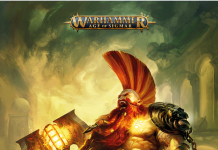
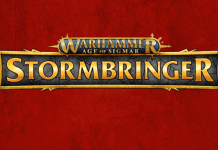
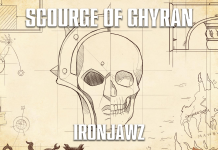







![[40k] Competitive Innovations in 10th: Warping Time pt.2](https://d1w82usnq70pt2.cloudfront.net/wp-content/uploads/2020/01/Analysis_Banner.png)


